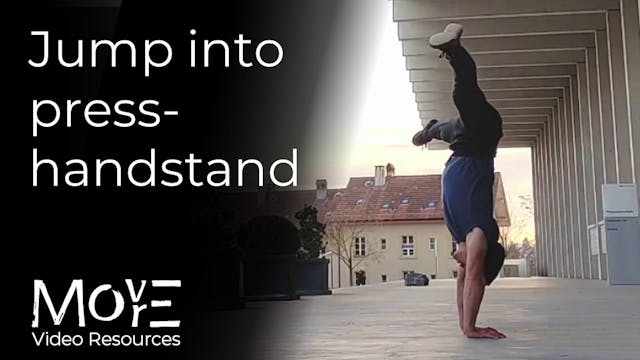Jump to tuck-handstand (reps)
Handstand balance contexts
•
1m 15s
THE WHAT & WHY:
A simple context for developing the consistency of your jump into tuck-HS form. The objective is to develop EFFICIENCY: the jump-up should feel as easy as possible, use as little energy as possible, make as little noise as possible on landing and use the REBOUND to re-enter the next repetition.
The benefit of focusing on handstand kick-up consistency is that, the less time & energy you spend in attempts trying to kick-up, the more you have for the actual practice of balance.
LEARN MORE (subscriber-only):
https://drive.google.com/file/d/1F7zwSRKzgrdI97OIFI3ZkNKKyzqDmdzK/view?usp=drive_link
___________________
For programming, guidance, & support for your physical practice:
FREE fundamental prehabilitation program: https://www.movemoremp.com
Online Support (1 to 1 coaching): https://movemoremp.com/onlinesupport
Elements (standardised programs): https://www.movemoremp.com/elements
[email protected]
Up Next in Handstand balance contexts
-
Jump to Tuck-handstand hold
THE WHAT & WHY:
Some fundamental qualities of the 'Tuck-HS' to help develop understanding of the form and mechanics required to sustain it. Whilst it is recommended to place focus on learning your 'Straight-line' handstand before 'Tuck-HS', they can also be practiced/developed in tandem, with exp... -
Jump into press HS
THE WHAT:
Whilst this context does not significantly contribute to the straight-arm strength required to perform the full 'Press handstand', it allows development of the "popping" texture required for an efficient jump-up into straddle-handstand position which contributes to calibration of power-... -
Splits & straddle HS balance
THE WHAT & WHY:
The 'split' and 'straddle' are very simply & approachable options for expanding your experience of balancing handstand forms. Whilst it is advisable to already have some experience with your straight-line balancing handstand (consistent holds of 10-20 seconds) before opening more ...



